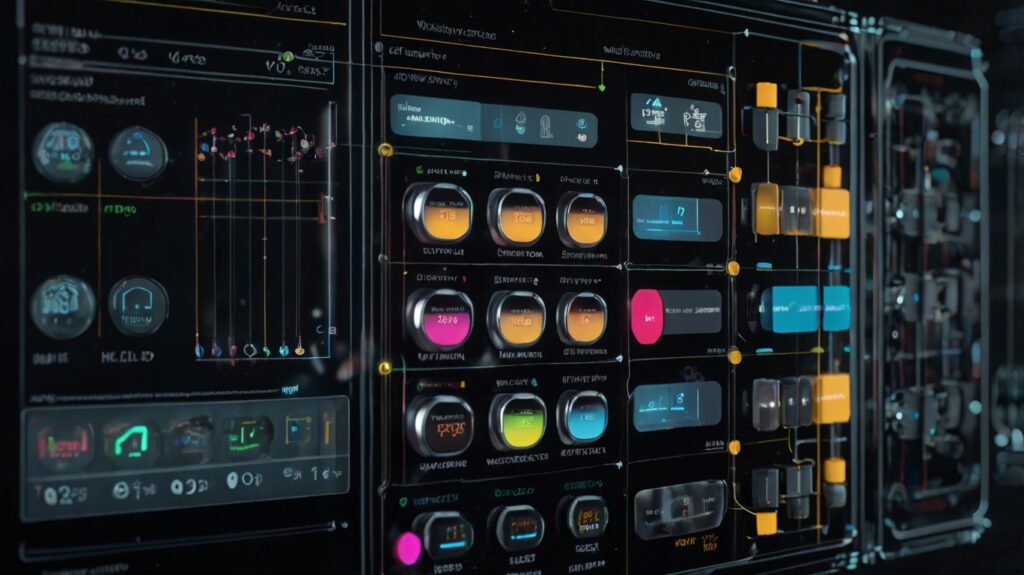The Future of Energy Storage: Exploring the Power and Potential of Lithium Batteries
As the demand for renewable energy sources continues to surge, the future of energy storage lies in the power and potential of lithium batteries. These high-performing batteries have revolutionized not only the electric vehicle market but also the renewable energy sector. With their ability to store large amounts of energy and deliver it on demand, lithium batteries are in high demand for grid-scale storage solutions.
In this article, we will explore the advancements and innovations in lithium battery technology and their impact on the future of energy storage. From increased energy density and longer lifespan to faster charging capabilities, lithium batteries are driving a clean energy revolution. We will also delve into the challenges and opportunities that lie ahead, such as the need for more sustainable lithium extraction methods and efficient end-of-life recycling.
Join us as we unravel the potential of lithium batteries and their role in shaping a greener and more sustainable energy future. Discover the key factors driving this technology forward and the exciting possibilities it holds for a world powered by clean and renewable energy.
Advantages of lithium batteries over traditional energy storage technologies
Lithium batteries have emerged as a superior choice compared to traditional energy storage technologies such as lead-acid and nickel-cadmium batteries. One of the most significant advantages is their energy density, which allows lithium batteries to store more energy in a smaller and lighter package. This characteristic is particularly beneficial for applications like electric vehicles (EVs) and portable electronics, where weight and space are critical factors. With higher energy density, lithium batteries can provide longer run times and increased efficiency, making them an attractive option for both consumers and manufacturers.
Another key benefit of lithium batteries is their longer lifespan, often exceeding 2,000 charge cycles compared to lead-acid batteries, which typically last around 500 to 1,000 cycles. This longevity translates to lower replacement costs and reduced waste over time, making lithium batteries a more sustainable choice. Additionally, lithium batteries maintain their performance better as they age, retaining a higher percentage of their original capacity even after extensive use. This resilience ensures that users can rely on lithium batteries for consistent performance throughout their lifespan.
Fast charging capabilities are another advantage that sets lithium batteries apart from traditional alternatives. Lithium-ion technology enables rapid charging without significant degradation of the battery’s life or performance. This is particularly important in applications like public transportation and electric vehicles, where reduced downtime for charging can lead to increased operational efficiency. As the demand for quick and convenient energy solutions grows, the ability of lithium batteries to charge rapidly positions them as a leading technology in the energy storage landscape.

Current applications of lithium batteries in various industries
Lithium batteries are currently utilized across a wide range of industries, showcasing their versatility and effectiveness. In the automotive sector, electric vehicles are perhaps the most prominent application of lithium battery technology. Major automobile manufacturers have invested heavily in developing EVs powered by lithium-ion batteries, which provide the necessary range and performance to compete with traditional gasoline-powered vehicles. This shift towards electrification is not only reducing greenhouse gas emissions but also transforming the entire automotive landscape.

Moreover, the renewable energy sector has increasingly adopted lithium batteries for grid-scale energy storage solutions. As renewable energy sources like solar and wind become more prevalent, the ability to store excess energy generated during peak production times is crucial for maintaining grid stability. Lithium battery systems can store this energy and release it when demand peaks, helping to smooth out the fluctuations inherent in renewable energy generation. This integration of lithium batteries into the grid is essential for advancing a cleaner, more sustainable energy future.
In consumer electronics, lithium batteries have become the standard for powering devices such as smartphones, laptops, and tablets. Their lightweight design and high energy density make them ideal for portable gadgets that require reliable and long-lasting power. The rapid evolution of technology in this sector continues to drive innovations in lithium battery chemistry, leading to improvements in performance and safety features. As consumer demand for high-performance devices grows, so too does the reliance on advanced lithium battery technology to deliver on these expectations.
Recent technological advancements in lithium battery technology

Recent advancements in lithium battery technology have significantly enhanced their performance, safety, and sustainability. One notable development is the emergence of solid-state batteries, which replace the liquid electrolyte found in conventional lithium-ion batteries with a solid electrolyte. This innovation not only improves energy density but also reduces the risk of thermal runaway, a safety concern associated with traditional lithium batteries. Solid-state batteries promise to provide greater energy storage capabilities combined with enhanced safety features, making them an exciting area of research and development.
Another area of advancement is the development of lithium-sulfur batteries, which utilize sulfur in the cathode to increase energy density further. These batteries have the potential to offer energy densities up to five times greater than those of current lithium-ion batteries, which could revolutionize applications in electric vehicles and portable electronics. While there are challenges to overcome in terms of cycle life and efficiency, ongoing research is focused on improving the performance and feasibility of lithium-sulfur technology, paving the way for its potential commercial viability in the near future.
Furthermore, innovations in battery management systems (BMS) have also played a crucial role in optimizing lithium battery performance. Advanced BMS technology allows for real-time monitoring of battery health, temperature, and state of charge, enabling better management of charging and discharging cycles. This not only extends the lifespan of the batteries but also enhances safety by preventing overcharging and overheating. As battery management systems continue to evolve, they will provide new opportunities for improving the overall efficiency and reliability of lithium battery applications across various sectors.
Challenges and limitations of lithium batteries
Despite their numerous advantages, lithium batteries are not without challenges and limitations that must be addressed to ensure their continued growth and adoption. One significant issue is the environmental impact associated with lithium extraction and processing. The mining of lithium, primarily from salt flats and hard rock sources, can lead to habitat destruction, water depletion, and pollution. As the demand for lithium batteries increases, it is crucial to develop more sustainable extraction methods that minimize environmental harm and promote responsible sourcing of materials.
Another challenge lies in the materials used in lithium batteries, particularly cobalt, which is often required for the cathodes. Cobalt mining has raised ethical concerns related to labor practices and environmental degradation in countries where it is sourced, particularly in the Democratic Republic of the Congo. Researchers are actively seeking alternatives to cobalt in battery chemistry, such as nickel-rich formulations, which can reduce reliance on this controversial material. The transition to cobalt-free lithium batteries will be essential for improving the sustainability and ethical considerations of battery production.
Additionally, issues related to battery recycling and end-of-life disposal present significant challenges. Currently, a large percentage of lithium batteries are not recycled, leading to wasted resources and potential environmental hazards. Developing efficient recycling processes is crucial to reclaim valuable materials from spent batteries and reduce the need for virgin resources. Innovations in battery recycling technologies, such as hydrometallurgical and pyrometallurgical methods, are being explored to enhance recovery rates and create a circular economy for lithium batteries.
The future of lithium batteries: emerging trends and innovations
The future of lithium batteries is poised for significant advancements and innovations that will shape the energy landscape. One of the most promising trends is the development of next-generation battery chemistries that move beyond traditional lithium-ion technology. Researchers are exploring the use of alternative materials such as sodium, magnesium, and even aluminum, which could offer cost-effective and abundant solutions for energy storage. These alternatives may provide comparable or even superior performance while reducing reliance on lithium and cobalt, ultimately leading to more sustainable battery technologies.
Another exciting trend is the integration of artificial intelligence (AI) and machine learning into battery management systems. By leveraging AI algorithms, manufacturers can optimize battery performance and lifespan through predictive analytics and real-time monitoring. This technology can help identify potential issues before they arise, enabling proactive maintenance and enhancing the overall safety and reliability of lithium battery systems. As AI continues to evolve, its application in battery technology will drive efficiency and innovation in the energy storage industry.
Moreover, the proliferation of electric vehicles is expected to accelerate the development of lithium battery technology. As more consumers and businesses transition to EVs, the demand for high-performance batteries will drive research and investment in advanced battery technologies. This includes innovations in fast-charging capabilities, energy density improvements, and cost reductions, all of which will be critical for making electric vehicles more accessible and appealing to a broader audience. The convergence of these trends will likely lead to a transformative shift in the energy storage landscape over the coming years.
Environmental impact and sustainability of lithium batteries
The environmental impact and sustainability of lithium batteries are key considerations for their ongoing development and adoption. While lithium batteries offer significant advantages in terms of energy storage and efficiency, the lifecycle of these batteries—from extraction to disposal—poses environmental challenges. The mining processes for lithium can be water-intensive and generate significant ecological disturbances, particularly in regions where water resources are scarce. As the demand for lithium continues to grow, it is essential to adopt better practices that minimize these impacts and promote responsible sourcing.
Additionally, the production of lithium batteries often relies on materials that come with their own environmental and ethical concerns. For example, cobalt mining has been linked to human rights abuses and environmental degradation. As the industry seeks to improve sustainability, the focus is shifting towards developing cobalt-free alternatives and enhancing the overall transparency of supply chains. This shift not only addresses ethical concerns but also contributes to the long-term sustainability of lithium battery technology as a whole.

Recycling is another critical component of the sustainability equation. With millions of lithium batteries being produced and reaching the end of their useful life, effective recycling processes are essential for reclaiming valuable materials and reducing waste. Current recycling rates for lithium batteries are low, and many batteries end up in landfills, creating environmental hazards. By investing in advanced recycling technologies and establishing robust recycling systems, the industry can close the loop on battery production and contribute to a more circular economy. Innovations in recycling methods, such as direct recycling techniques, are paving the way for a more sustainable future for lithium batteries.
Government policies and regulations supporting the adoption of lithium batteries
Government policies and regulations play a crucial role in supporting the adoption of lithium batteries and driving the transition to cleaner energy solutions. Many countries are implementing incentives and subsidies to encourage the production and use of electric vehicles, which heavily rely on lithium battery technology. These initiatives often take the form of tax credits, rebates, and grants that make electric vehicles more financially accessible for consumers. By fostering a supportive regulatory environment, governments can stimulate demand for lithium batteries and accelerate the shift towards electrification.
In addition to incentives for consumers, governments are also investing in research and development initiatives aimed at advancing lithium battery technology. Funding for research projects and collaborations between academic institutions, industry players, and government agencies can lead to breakthroughs in battery performance, recycling methods, and sustainable sourcing practices. By prioritizing innovation in battery technology, governments can help address the challenges associated with lithium batteries and ensure their continued growth in the energy market.

Furthermore, regulatory frameworks are being established to promote responsible sourcing and recycling of lithium batteries. Legislation that mandates environmentally sound extraction practices and encourages manufacturers to adopt circular economy principles can help mitigate the environmental impact of lithium battery production. By implementing strict regulations on waste management and recycling, governments can ensure that lithium batteries are handled responsibly throughout their lifecycle, ultimately contributing to a more sustainable energy future.
Investing in the lithium battery market: opportunities and considerations
As the demand for lithium batteries continues to grow, investing in this market presents significant opportunities for investors and companies alike. The rise of electric vehicles and renewable energy storage solutions has created a burgeoning market for lithium batteries, which is expected to expand rapidly over the coming years. Investors can capitalize on this trend by identifying companies involved in lithium battery production, lithium mining, and related technologies. As the market matures, opportunities for growth and innovation will abound, making it an attractive sector for investment.

However, potential investors should also consider the challenges and risks associated with the lithium battery market. Fluctuations in lithium prices, environmental concerns, and regulatory changes can all impact the profitability of lithium-related investments. Additionally, as competition in the battery market increases, companies may need to innovate continuously to maintain their market position. Investors should conduct thorough research and analysis to understand the dynamics of the lithium battery market and make informed decisions.
Moreover, the focus on sustainability is reshaping the investment landscape for lithium batteries. As consumers and investors alike prioritize environmental, social, and governance (ESG) factors, companies that demonstrate a commitment to responsible sourcing, ethical practices, and recycling initiatives will likely attract more interest. Investors should look for companies that align with these values and actively contribute to the development of sustainable battery technologies. In doing so, they can not only capitalize on the growth potential of the lithium battery market but also play a role in promoting a greener future.
Conclusion: The transformative potential of lithium batteries in the energy industry
In conclusion, lithium batteries stand at the forefront of the energy storage revolution, offering transformative potential for various industries and applications. Their advantages over traditional energy storage technologies, including higher energy density, longer lifespan, and faster charging capabilities, position them as the go-to solution for electric vehicles, renewable energy storage, and consumer electronics. As technological advancements continue to emerge, the performance and safety of lithium batteries will only improve, paving the way for a more sustainable energy future.
However, the journey towards widespread adoption of lithium batteries is not without challenges. The environmental impact of lithium extraction, ethical concerns surrounding material sourcing, and the need for efficient recycling processes must be addressed to ensure the sustainability of this technology. With government support, innovative research, and a focus on responsible practices, the industry can overcome these hurdles and unlock the full potential of lithium batteries.

As we move forward, the convergence of emerging trends, such as next-generation battery chemistries and artificial intelligence in battery management systems, will drive further innovation in the energy storage landscape. The commitment to sustainability and ethical practices will also shape the future of lithium batteries, ensuring that they contribute to a greener and cleaner energy ecosystem. The role of lithium batteries in the global energy transition cannot be overstated, and their transformative potential will play a crucial part in building a sustainable and resilient energy future.

